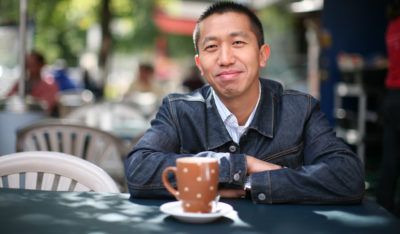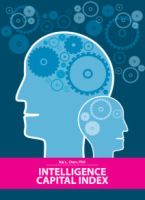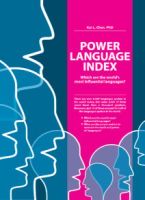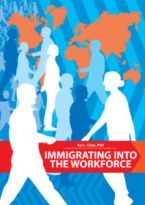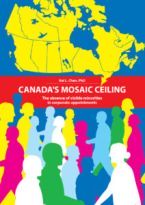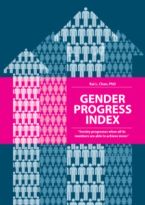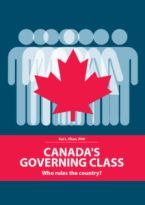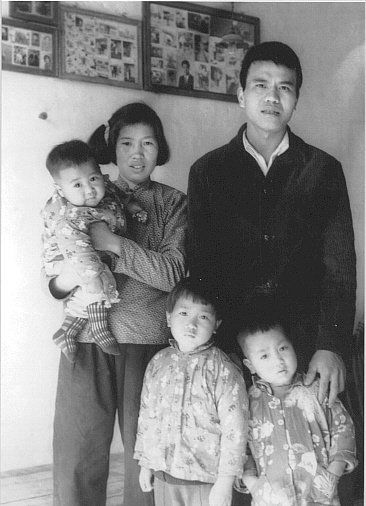
Multiculturalism and integration
Political borders are increasingly becoming irrelevant through globalisation and mass migration. This has led to many benefits as well as challenges to our society. Some countries are struggling to integrate immigrants into the mainstream society and this has sparked an intense debate throughout western democracies, which have been the principal recipients of the newcomers. Some countries have experimented with multiculturalism (i.e. a mosaic), while others perceive a “melting point” as the best means to integrate immigrants into society.
Integration can have multiple facets / interpretations. One view of integration is that newcomers absorb the dominant culture — this might more properly called “assimilation”. Another perspective is that newcomers function well within the greater society (without necessarily being absorbed into the dominant culture) — a good descriptive of this would be “harmonisation”. For example, a minority group may live segregated from the dominant group but are nevertheless thriving, with social indicators (e.g. education, employment, criminality, etc.) similar or even better than the dominant group.
Social tensions and problems arise when minority groups do not assimilate or harmonise. In some cases even when groups harmonise it may engender social tension if the group is “too” successful (e.g. Jews Europe, and ethnic Chinese in Southeast Asia) and remains (visibly) segregated from the dominant group.
Ethnic enclaves and ghettos
Ethnic enclaves are neighbourhoods primarily populated by persons of similar ethnic or racial backgrounds. They are, for the most part (at least in modern times and developed countries), outcomes of choice and voluntary settlement. Ghettos, on the other hand, have a more pejorative meaning owing to their etymology as a place where Jews in Venice were restricted to living. In modern times they are associated with poor (typically minority) neighbourhoods that are riddled with crime, drugs, unemployment, and other social ills.
There is a valid ongoing debate between the merits and disadvantages of ethnic enclaves in multicultural societies. On the plus side, ethnic enclaves may help with settlement into a new country by providing a familiar social support network. On the other hand, they may limit integration by promoting segregation.
Integration has become an especially hot topic in Quebec, where there are sensitivities over the French language and culture in a province that is engulfed by the English majority of North America. Indeed, Quebec ran a commission (Bouchard-Taylor Commission) in 2007 to examine the “reasonable accommodation” of minorities within the largely francophone Quebec culture.
The Chinese community in Montreal, largely concentrated in the suburb of Brossard, is the largest Chinese community in Quebec, although it pales in size to similar Chinese-dominant neighbourhoods in North America. Nevertheless, it is an interesting example of an ethnic enclave populated by newcomers who have a good history of harmonising within society, but with a more ambiguous take on assimilating.
Such enclaves make it harder for the community to integrate with the larger society as a whole, especially when there are already linguistic, cultural and racial differences. The overseas Chinese communities in the Occidental world are also notable in that they are highly visible (i.e. white ethnic enclaves do not stand out as much in western societies). Indeed, in Toronto the Italian and Jewish communities also primarily reside in ethnic enclaves, but conversations about their integration/segregation into society are rare.
Integration and in-group preferences (“homophily”)
One factor that inhibits integration and encourages the development of ethnic enclaves is the phenomenon known as “in-group preferences”, which also goes by the more technical name “homophily”. This describes the tendency for people to bond with people of similar backgrounds; i.e. “birds of a similar feather flock together.” This is most evident when considering homophily by race and ethnicity. In-group preferences by race/ethnicity tend to be strong (see, e.g. “Beyond and below racial homophily” (Wimmer & Lewis, 2010)) and may lead to network bottlenecks. Thus even very diverse cities in open and liberal societies tend to have strong geographic boundaries of where different groups of people live. Dustin Cable of the University of Virginia has an excellent interactive map showing the geographic segregation by race in the United States: The racial dot map.
In-group preferences also explains the high tendency not just for finding kinship with people of similar backgrounds, but also in looking for a life partner from within the same group. Indeed, mixed-race couples are still very low in numbers, even in ethnically diverse cities such as Toronto, where they make up 5 percent of all couples, even though half the city are visible minorities — and the composition of visible minorities itself is very diverse.
Even amongst people who do not outwardly express homophily in dating, in-group preferences remain high. This phenomenon was noted in Steven Levitt’s book, Freakonomics, when he analysed the dating patterns of people seeking mates online. Namely, 98 percent of white women who said on their dating profile that “race does not matter” reached out exclusively to white profiles, with the corresponding value for white males at 90 percent. Of course, some of these people ticked the “race does not matter” box to appear non-racial in their preferences (i.e. they did not want to appear to display what may be considered a “racist” preference in dating even though their preferences are indeed homogeneous).
Distribution of attractiveness by groups
Although it is often said that “beauty is in the eye of the beholder”, there are certain traits that are uniformly deemed attractive across groups. Racial homophily in mating also suggests that people tend to rate potential partners of the same group more attractive than other groups. In the Unites States this is generally true, with the exception of Asians, who actually rate the attractiveness of outside groups higher than within their group according to a NBER study on speed dating (Fisman et al., 2004). The standard of beauty also has a gender dimension in that males and females of the same ethnic/racial group have very different status in the beauty pecking order (e.g. Asian females are generally seen as desirable in Occidental societies, while their male counterparts are generally viewed as undesirable).
The Fisman et al. (2004) study also quantified the dating hierarchy in monetary value by examining the number of interests/hits/flirts that a profile receives based on certain characteristics, such as race, height, income and weight. For race, it showed that to have equal success with a white female (ceteris paribus) as compared with a white male (income $62,500): (1) Asian American male needs to earn $309,500; (2) African American male needs to earn $216,500; (3) Hsipanic male needs to earn $139,500. Concerning height, a 5-foot-6 (171 cm) man would need to earn $183,000 more than a 6-foot-0 (183 cm) to be as successful in the (US) dating market (ceteris paribus).
Although the Fisman et al. (2014) study covers just a cross section of the dating market and its geography is limited to the United States, the results have illustrative and are generally directionally in accord with cross-country studies on mating preferences by race.
Social inclusion
Minority groups (gendered) that are seen by the majority as attractive have an easier route to integration. For one, since they are seen as attractive to the majority it is easier for them to find a partner from the majority group. Secondly, since they are more socially accepted by the majority, they have more social options to them. As most societies are male dominant, it is generally easier for females to integrate (if they wish to). This is especially true as females are less predisposed to criminality. However, in much of East Asia, it is foreign (non-Asian) men that usually integrate better than their female counterparts.
Social acceptance by the majority depends very much on the social desirability of the minority group (gendered). Thus in many western societies East Asian females tend to be more accepted than their male counterparts.
Integration and dating/marriage preferences: (WIP)
Probably the highest act of integration that an immigrant can make is to marry within the majority population. However, unions are two-way arrangements. So even if a newcomer wishes to be paired with a spouse from the majority group, it is dependent on finding a willing partner. In the lingo of economists, their needs to be a “matching function” (see xxx) which would be an optimal choice for both parties. Matches within the same culture/community are problematic enough, so when the newcomer and the majority are of different cultures, religions, race, ethnicity, etc. it complicates the matter even more.
Assortive mating — the phenomenon of like mating with like (with various dimensions, such as race, religion, income, etc.) — is the norm.
Economic migrants: (WIP)
The term “economic migrant” is used to refer to someone who has moved (typically internationally) for the purpose of seeking employment or improved financial position. However, the term is most often associated with low-skilled labour, and professionals who move overseas for work are often referred to as “expats”. In the Gulf Region, where the share of economic migrants relative to the local population is high, the term “blue collar labour” is often used to distinguish low-skilled economic migrants from the “expats” (high-skilled economic migrants). Sometimes these terms are used to differentiate economic migrants from developed countries (“expats”) and those from developing countries and LDCs (“blue collar workers”, “migrant labour”, etc.).
Social mobility (WIP)
Social mobility is often defined in economic terms — the ability of people to move up or down the economic ladder, which is often a proxy for class, especially in racially homogeneous societies. However, social mobility defined in purely economic terms is a very limited perception of a person’s social standing in society. Other factors, such as race/ethnicity (especially with respect to belonging to the dominant group), height, attractiveness, intelligence, health, family and social networks, etc. matter a lot for a person’s position within the social ladder.
Highly educated mobile professionals:
Most often people associate immigration with the movement of economic, illegal or low-skilled migrants. But oftentimes the flow of bodies is at the higher end of the economic and educational spectrum, as part of the global competition for talent. The increased returns to higher education and the mobility of the educated class has created a new breed of citizens who are best described as highly educated mobile professionals (HEMP). Such persons are defined by their educational credentials and high degree of mobility. HEMPs attend elite universities such as Harvard or Oxford and often cluster in global cities such as London, New York or Hong Kong. HEMPs are thus defined by three qualities:
- Born/raised in one country and educated at an elite institution in a different country (speaking multiple languages)
- Work in a mobile professional services sector (e.g. academia, finance, legal, medicine, etc.)
- Have worked in several countries in their professional career
in early 2011 Chrystia Freeland wrote for the Atlantic Magazine an interesting piece that highlights the intersections of mobility, inequality and education that is giving rise to a new plutocracy: “The rise of the new global elite.” She notes that the global elite (a.k.a. the super rich) are “hardworking, highly educated, jet-setting meritocrats” who form “a transglobal community of peers who have more in common with one another than with their countrymen”. Although the global elites, as described by Freeland, are not synonomous with HEMPs, they both speak of a world where mobile talent is increasingly influencing culture.
Although there is indeed a global competition for talent, there always exists antagonism between local and migrant populations. Even San Francisco, a magnet for highly educated workers, has had tensions as these HEMPs disrupt the status quo (driving up property price, etc.). (See, e.g. “Elite migrant workers must be welcomed, not attacked” by John Gapper of the FT (29 January 2014).)
Hyperpolyglots:
There is no formal definition/criterion to define hyperployglotism, but it is used to refer to people with an ability to communicate (at a highly proficient level) in many languages. (Perhaps a working definition would be one who knows and speaks – at CEFR B2 or equivalent level — at least 6 languages (mother tongue + 5) of which the 5+ acquired represent at least 3 distinct language families.) HEMPs often fit the mold given their mobility, although English as a lingua franca for many of the elite professions might obviate the need to acquire proficiency in other foreign languages.
A useful way to gauge the efficacy of languages is to consider their strengths in geography, economy, communication, knowledge & media, and diplomacy. The Powerful Language Index (PLI) just does that and captures the strength of languages under those 5 categories with a total of 20 indicators. Based on this assessment the PLI yields the following as the ten most effective languages (PLI score in parenthesis):
- English (0.889)
- Mandarin Chinese (0.411)
- French (0.337)
- Spanish (0.329)
- Arabic (0.273)
- Russian (0.244)
- German (0.191)
- Japanese (0.133)
- Portuguese (0.119)
- Hindi (0.117)
More than just the number of languages spoken, what makes a polyglot more effective is the strengths of the languages spoken. That is, it would be better to speak 3 “powerful” languages rather than 20 “weaker” ones.
Global hotpsots (WIP):
Hemps, as well as low-skilled migrants, are typically drawn to global cities, such as New York, London and Hong Kong. Often, it is the two groups co-exist in a symbiotic relationship: Hemps are attracted to the global centres because of the availability of low-cost labour that allows the high-skilled migrants to devote time and attention to their professional endeavours. (For example, an investment banker working long hours who hires a maid or nanny.) Indeed, in places where the availability of services for busy professionals is limited, it also deters employers and Hemps from locating there.
One of the more notable compilations of global hotspots is by the Globalisation and World Cities Research Network (GaWC), which stratifies cities into various tiers. London and New York are classified as “alpha-plus-plus” cities. The below list are the GaWC’s alpha++ and alpha+ cities (2012), along with the proportion of non-nationals and foreign born in the population:
CITY (Non-national; Foreign-born)
- London (24%; 39%)
- New York ( ; 37%)
- Hong Kong (5%; )
- Paris (; 19%)
- Singapore (38%; 43%)
- Shanghai ()
- Tokyo (1%; )
- Beijing ()
- Sydney ( )
- Dubai (95%; 73%)
Sources: National censuses
The European migrant crisis:
Europe has seen a large influx of migrants beginning in 2008 and spiking at over one million asylum seekers entering the EU in 2015. Since 2008 through early 2017, over 4.5 million migrants have sought refuge in the EU. If the migrants who entered into Europe since 2008 were a nation unto themselves, they be comparable in size to Ireland, but with an average wealth level similar to Ukraine. The migrant wave — and there has been a fierce debate over the appropriate nomenclature of these people on whether they should be referred to as “refugees” or “economic migrants” — is the largest since WW2 and straining the ability of Europe to absorb them. The crisis is not driven only by the sheer number of refugee applicants, but probably more so by the stark socio-demographic characteristics of the asylum seekers.
Europe, and especially Germany, has been very tepid about speaking openly about the ethnic, cultural and religious backgrounds of the migrants, especially in relation to reporting of crime. Nevertheless, the vast majority of the migrants are Muslim from the MENA region with Arabic the dominant language and culture. The stark differences in development between secular Europe and the deeply religious societies of the migrants’ origin nations has led to a clash of cultures in many parts of Europe.
The below is a table comparing the vital statistics of EU and Germany against the migrants that have applied for refuge in Europe (“Applicants”) and those who have successfully been granted asylum (“Accepted”).
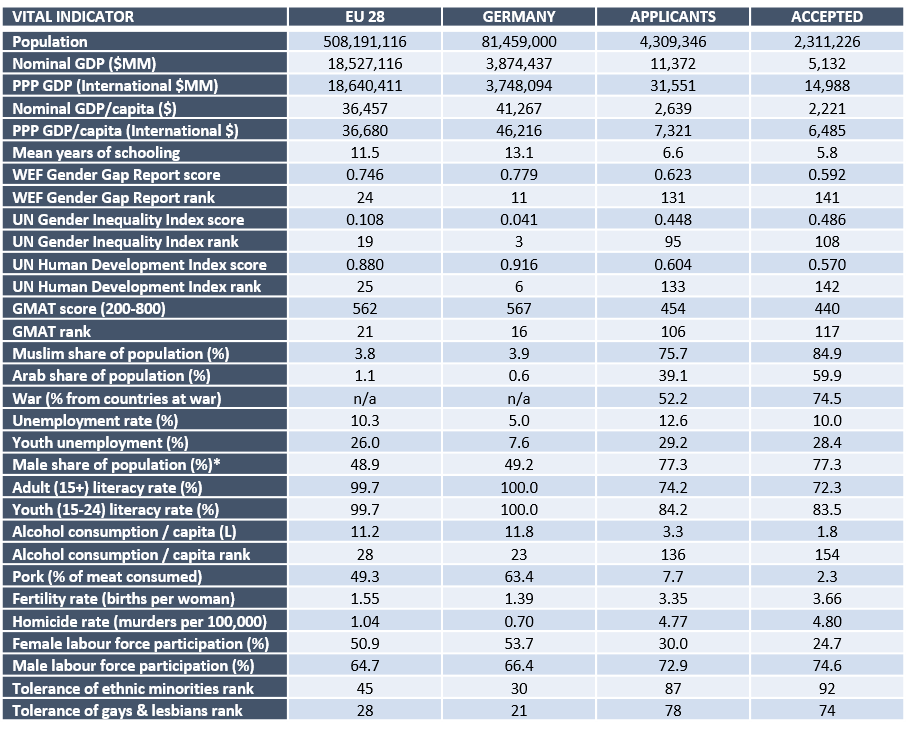
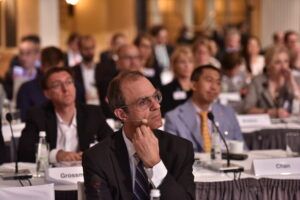
The 15th Munich Economic Summit (Jun 30-Jul 1, 2016) addressed the migrant crisis under the theme of “Migration: opportunity or challenge?” The topic of one of the summit’s breakout sessions was “immigrating into the workforce”, an assessment of the challenges that Germany (and Europe) will face in absorbing the migrants into the labour market. I shared a personal essay on my own migrant experience in Germany to help initiate the discussion: “Immigrating into the workforce.” It will be a difficult challenge for Germany and Europe to integrate the recent wave of migrants given the huge gulf (social, cultural, cognitive, etc.) between them and modern, secular Europe. History has also shown that the migrants groups currently entering Europe have a checkered history of integration.
Migrants and criminality: (WIP)
To meaningfully speak of any correlation between migrants and criminality it first requires to differentiate various migrant groups as each are unique and have their own traits. In
Evaluation of migration policies: (WIP)
The
References:
- Fisman, Raymond et al. (2008). “Racial preferences in dating: Evidence from a speed dating experiment” Review of Economic Studies (2008) 75, 117-132.
- Levitt, Steven D. and Stephen J. Dubner (2005). “Freakonomics: A rogue economist explores the hidden story of everything.” William Morrow.
- Wimmer, Andreas and Kevin Lewis (2010). “Beyond and below racial homophily: ERG models of a friendship network documented on Facebook.” AJS Volume 116 Number 2 (September 2010): 583-642.


